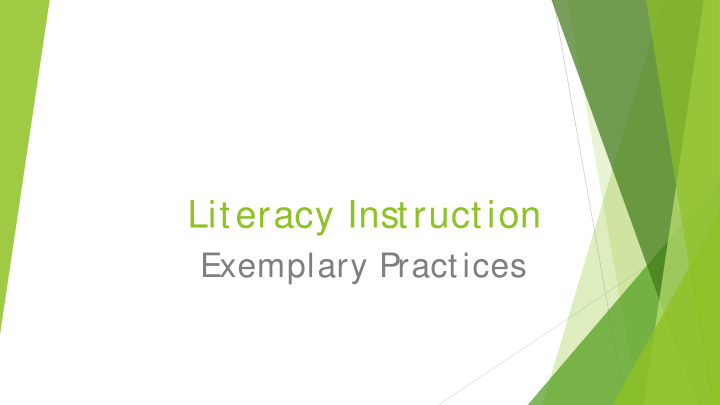



Literacy Instruction Exemplary Practices
Evidence-Based Practice
Best available evidence National Institute of Child Health and Human Development. (2000). Teaching children t o read: An evidence-based assessment of t he scient ific research lit erat ure on reading and it s implicat ions for reading inst ruct ion. National Reading Panel report. Washington, DC: US Government Printing Office. www.nichd.nih.gov/ publications/ nrp/ documents/ reports.pdf Rose, J. (2009). Ident ifying and t eaching children and young people wit h dyslexia and lit eracy difficult ies. Nottingham: DCS F Publications. Foundat ions for Lit eracy: An Evidence-based Toolkit for t he Effect ive Reading and Writ ing Teacher. Canadian Language and Literacy Research Network. S tuart, M. & S tainthorp, R. (2016). Reading development and t eaching. Los Angeles: S age
S imple View of Reading (S VoR) Visual word Comprehension recognition Phonemic awareness Vocabulary Alphabetic code Comprehension Phonics Fluency (Challenges = 25% ) +/ or (Challenges = 8% )
Effective and efficient instruction in an inclusive model Typical (75% approximately) Mild Moderate S evere Profound Tier 1: Whole class Tier 2: S mall group Tier 3: Individual Best case scenario: dynamic Multi-Tiered Support System (MTSS)
Recommend
More recommend